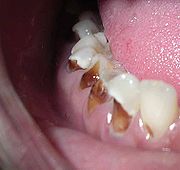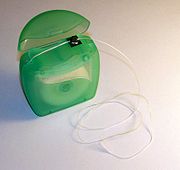 Yesterday, there were 2 ASNB agent came to my office as the event was organized by our Pejabat Pengarah Negeri department. They were stationed at the 10th floor which is at my working floor. So, it was easy for me to ask questions and if I’m interested I can join too.
Yesterday, there were 2 ASNB agent came to my office as the event was organized by our Pejabat Pengarah Negeri department. They were stationed at the 10th floor which is at my working floor. So, it was easy for me to ask questions and if I’m interested I can join too.First, they gave us a piece of paper (no proper pamphlet?) with some detail about what they are going to explain. I looked at it and I guess others who came have the same thought; it was about ASB not some other unit trust like investment. I still stay there and I got a lot of questions. When I say a lot, it really a lot! (Ask my colleagues… and yes I was like an agent after that but not the one to suggest but the one against them lol).
Ok, it works like this (click on the image if you need a enlarge the view).
The money in your Account 1 (EPF) cannot be taken out until your retirement at the age of 55 years old. So, the suggestion is to take out money from there and put it in other investment under ASNB such as ASD, ASW2020, ASN2 and ASG which they are like other unit trust as example Public Mutual and CIMB schemes. The different is there is no deduction from your principle for ASD and ASW2020. For instance we take ASW2020 (which was suggested by them) and EPF statistic for comparison.

Amanah Saham Wawasan 2020 (ASW 2020) Dividend Rate Since year 1999
Year Dividend
2008 - 7.00
2007 - 8.00
2006 - 6.80
2005 - 7.10
2004 - 7.00
2003 - 6.60
2002 - 7.25
2001 - 7.25
2000 - 8.80
1999 - 10.20
and for EPF Dividend Rate…
2007 5.8
2006 5.15
2005 5
2004 4.75
2003 4.5
2002 4.25
2001 5
2000 6
1999 6.84
1998 6.7
1997 6.7
1996 7.7
1995 7.5
1988 - 1994 8
1983 - 1987 8.5
Yes, you are right! If you make this comparison, ASW2020 seems promising with higher return than EPF.
How to take out your Account 1 money into ASW2020?
No, you can’t take them all out. There is a calculation for it.
We take example let say you are 27 years old. So your Account 1 must have 12,000. But if you have only 12,000 you can’t invest either. You must minus your Account 1 amount with the 12,000 which is suppose to have in Account 1. Got it? (Don’t ask me why the calculation is like that as I asked the same question to them and they answered “that is we calculate”). Then the balance of your minus has to multiply with 20%.


The minimum investment is 1,000.
So in that case, you need to have 17,000 in your Account 1 at least to have the minimum requirement.
(17,000 – 12,000) X 20%
17,000 – 12,000 = 5,000
5,000 X 20% = 1,000 (this is the minimum requirement to invest)
Well, most people look at it like this.
That 1,000 are better to be put in ASW2020 since the dividend return is 7% unlike EPF with 5%.
To me it will be good if you can take the whole amount in Account 1 but if only 20% out of the balance after you minus with the amount in the table, I don’t think it’s a good idea. Why I said so?
Take the same case as example.
If we leave the money in EPF here is the calculation.
17,000 X 5% = 850
17,000 + 850 = 17,850
and this is if you take out your money into ASW2020…
17,000 – 1,000 = 16,000 (balance in EPF)
16,000 X 4% = 640
16,000 + 640 = 16,640
1,000 (the amount you put in ASW2020) X 7% = 70
16,640 + 70 = 16,710
So, which one do you think make more money for you? As I said, it would be good if you take the whole amount but not if it’s too little.
Many of my colleagues joined this scheme but to those who asked my opinion, I showed this calculation. It’s up to you as it is your money.
By the way, since I’m talking about this I want to put statistic for ASB too just for comparison as many of you ask me which is better between ASB and ASW.
• 1993: Dividend=9.00, Bonus=4.50*
• 1994: Dividend=9.00, Bonus=4.50*
• 1995: Dividend=10.0, Bonus=3.00*
• 1996: Dividend=10.25, Bonus=3.00*
• 1997: Dividend=10.25, Bonus=1.25*
• 1998: Dividend=8.00, Bonus=2.50*
• 1999: Dividend=10.5, Bonus=1.50*
• 2000: Dividend=9.75, Bonus=2.00*
• 2001: Dividend=7.00, Bonus=3.00*
• 2002: Dividend=7.00, Bonus=2.00**
• 2003: Dividend=7.25, Bonus=2.00**
• 2004: Dividend=7.25, Bonus=2.00**
• 2005: Dividend=7.25, Bonus=1.75**
• 2006: Dividend=7.30, Bonus=1.25**
• 2007: Dividend=8.00, Bonus=1.00**
So what say you?






































